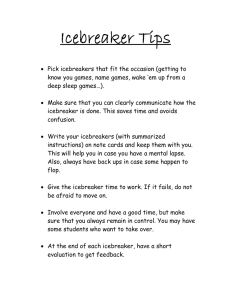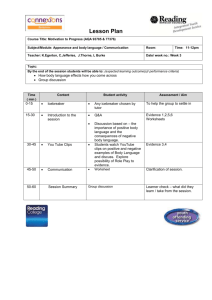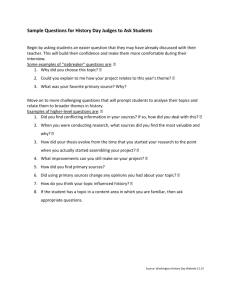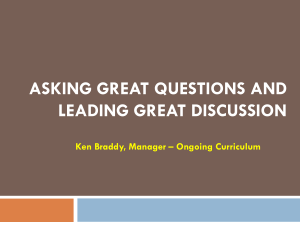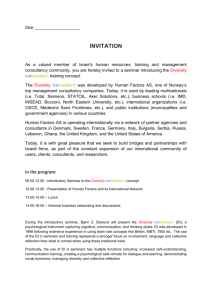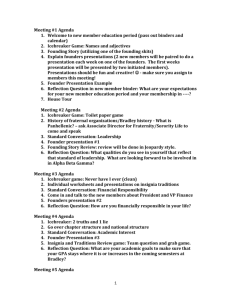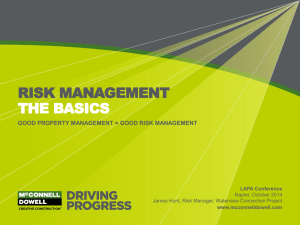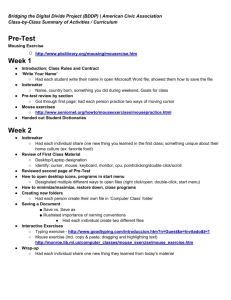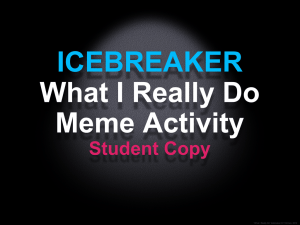View PowerPoint™ Slides
advertisement
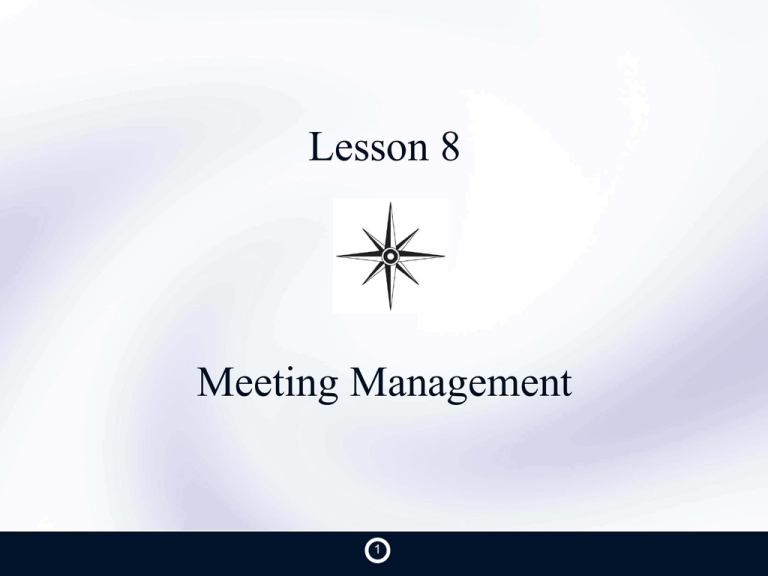
Lesson 8 Meeting Management 1 Purpose • Understand current level of meeting effectiveness • Present a standard meeting format • See the results created from using this format • Learn how to apply the principles in informal meetings 2 How Would You Characterize The Meetings You Attend? 3 Standard Meeting Format • • • • • • Icebreaker Review agenda Set expectations Content Next Step Feedback 4 Icebreaker • Purpose – BREAK THE ICE! • Get everyone at ease and participating • Make it fun such as: – a riddle – or joke – a puzzle – learn something about each participant. • Time is taken proportional to length of meeting. 5 Review Agenda • Helps to gain agreement on the meeting’s: – Purpose – Focus – Flow. • Agenda topics can be clarified/added/deleted. • Agenda is an outline of what you want to accomplish. 6 Set Expectations • Clarifies what the participants expect to get accomplished • Further defines meeting focus and flow • Identifies expectations beyond the scope of the meeting • Establishes the desired results 7 Content • This is the body of the meeting • Outlined in your agenda • The work to be done 8 Next Step • The next logical step for you to take: – Work on actions ageed to – Another meeting • There may be no next step - you may be done 9 Feedback • Review the expectations that were set • Give performance feedback to facilitator and participants as a group (critical feedback to an individual should be given one-on-one after the meeting) • Give suggestions for how to improve future meetings • This step gives closure to the meeting 10 Meeting Basics • Get ready before the meeting: – Issue agenda in advance to all participants as appropriate – Get meeting room ready • Keep a visual record of the meeting: – flipcharts – notes 11 Meeting Basics continued • Standard Meeting Ground rules: – Arrive on time / Start on time / End on time – Be respectful / Be open & honest – One person speaks at a time • Record ACTIONS to be taken: – Who / What / Due Date 12 Meeting Basics continued • Keep track of ISSUES raised during the meeting – Issues page or parking lot • Conduct outside of meeting – Maintain established confidences, don’t discuss! – Represent the team 13 Roles • Team leader: – Arranges meeting room – Establishes agenda – Invites appropriate participants – Keeps the meeting on task • Scribe: – Records notes preferably on wall for all to see – Translates notes into short form minutes – Distributes minutes • Facilitative monitor: – Assists leader with keeping on task – Reminds group when ground rules are broken 14 Follow-up • Prepare meeting minutes as soon as reasonable • Send to all participants 15 Desired Result • A successful meeting: – starts and ends on time - or earlier – is efficient – time is well utilized – achieves the expectations set by participants – provides for mutual support and respect among participants – results in the necessary decisions – concludes with a common understanding of meeting results and assignments – creates participants ownership in results – increases the trust among participants 16 Informal Meetings • For use in one-on-one meetings • In person or by phone • Use principles: – Icebreaker – “How’s the weather?”, “How is your family?” – Review agenda/set expectations – “What do we want to accomplish?” – Content – Next Step – “What’s next?” – Feedback – “Did we cover what we wanted to cover?” 17 Implications for Leaders • Meeting Management – highly effective • Easily learned and applied • Can generate quick benefits for limited costs • A very effective initial step for organizational change 18 Summary • Without a process meetings are ineffective • Standard meeting format: – – – – – – Icebreaker Review agenda Set expectations Content Next Step Feedback • Meeting basics – ground rules and roles • Desired results • Informal meetings 19 Bibliography Sipress, David. Cartoon: The New Yorker. New York: Condé Nast: October 31, 2011. 20 This lesson is a modified excerpt from the book, Compass – Creating Exceptional Organizations: A Leader’s Guide, written by William F. Brandt, Jr., cofounder and former CEO of American Woodmark Corporation – the third largest producer of kitchen cabinets in America. Copyright 2013 William F. Brandt, Jr. This lesson may be copied, presented and/or distributed to up to five people. Distribution beyond five is subject to a user fee as described in the website: CompassCEO.com The book and related materials are also available from the website: CompassCEO.com 21
